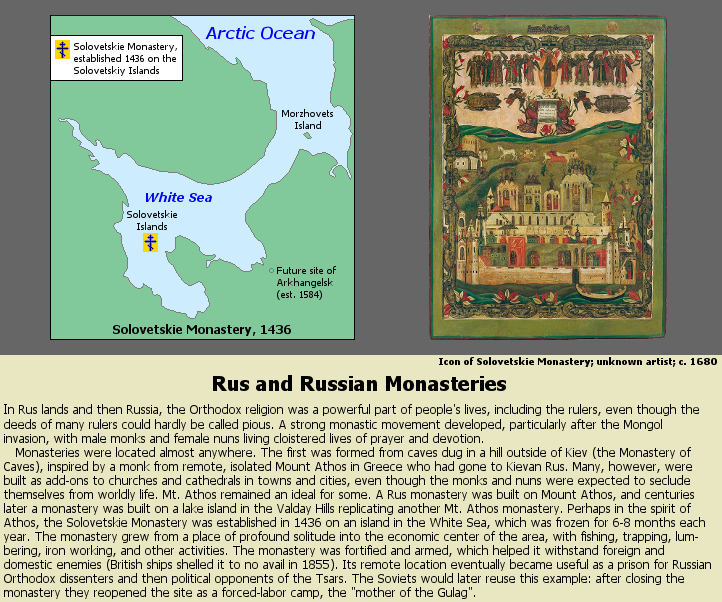

Rus and Russian Monasteries
In Rus lands and then Russia, the Orthodox religion was a powerful part of people's lives, including the rulers, even though the deeds of many rulers could hardly be called pious. A strong monastic movement developed, particularly after the Mongol invasion, with male monks and female nuns living cloistered lives of prayer and devotion in monasteries.
Monasteries were located almost anywhere. The first was formed from caves dug in a hill outside of Kiev (the Monastery of Caves), inspired by a monk from remote, isolated Mount Athos in Greece who had gone to Kievan Rus. Many, however, were built as add-ons to churches and cathedrals in towns and cities, even though the monks and nuns were expected to seclude themselves from worldly life. Mt. Athos remained an ideal for some. A Rus monastery was built on Mount Athos, and centuries later a monastery was built on a lake island in the Valday Hills replicating another Mt. Athos monastery. Perhaps in the spirit of Athos, the Solovetskie Monastery was established in 1436 on an island in the White Sea, which was frozen for 6-8 months each year. The monastery grew from a place of profound solitude into the economic center of the area, with fishing, trapping, lumbering, iron working, and other activities. The monastery was fortified and armed, which helped it withstand foreign and domestic enemies (British ships shelled it to no avail in 1855). Its remote location eventually became useful as a prison for Russian Orthodox dissenters and then political opponents of the Tsars. The Soviets would later reuse this example: after closing the monastery they reopened the site as a forced-labor camp, the "mother of the Gulag".